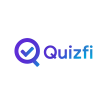
writer : Ai
Editor : Mojtaba Nayebpour
2025/07/27
Here's the combined and professional of analyses—first outlining the U.S. government's AI structure and ecosystem, followed by a detailed roadmap for how a country like Iran can reach similar levels of AI development:
The U.S. Government’s AI Structure, Ecosystem Role & Drivers of Success
The United States has established a multi-layered and collaborative framework for managing artificial intelligence (AI), integrating national strategy, inter-agency coordination, ethical oversight, and ecosystem development. This structure is designed to not only foster innovation but also ensure the safety, fairness, and global leadership of the U.S. in AI technologies.
-- Key Government Institutions and Roles
InstitutionRoleWhite House Office of Science and Technology Policy (OSTP)National AI policy direction and coordination
- National AI Initiative Office (NAIIO)Oversees and aligns federal AI activities
- National Institute of Standards and Technology (NIST)AI standards, reliability, and risk frameworks
- Defense Advanced Research Projects Agency (DARPA)Cutting-edge military and defense AI R&D
- National Science Foundation (NSF)Funds basic AI research and talent development
- Department of Energy (DOE)Applies AI in supercomputing and energy systems
- AI.gov & U.S. Digital ServiceImplements AI in public sector and services
-- Functional Flowchart
President & Congress │ ▼ White House OSTP │ ├── National AI Initiative Office │ ├── NIST │ ├── NSF │ ├── DOE / DoD / NIH │ └── AI.gov ▼ U.S. AI Ecosystem: Academia ↔ Industry ↔ Government ↔ Civil Society
-- Ecosystem Role of U.S. AI Policy
Regulation & Policy: Sets ethical, legal, and technical guidelines
Public-Private Collaboration: Funds research in universities and startups
Global Standards Leadership: Shapes international AI norms and safety protocols
Infrastructure Support: Offers cloud, data, and computing access to AI developers
-- Key Success Factors of the U.S. AI Model
Strategic Vision: National AI R&D Strategic Plan, executive orders, and long-term funding
Massive Investments: Billions in public-private R&D via CHIPS and Science Act, NSF AI Institutes
Talent & Openness: Attracts global talent, supports open-source and open-research culture
Ethics and Trust: Through frameworks like the AI Bill of Rights and NIST AI Risk Management
🇮🇷 How Iran Can Build a Competitive AI Ecosystem: A Strategic Roadmap
To reach a competitive level similar to the U.S. in AI, Iran needs a well-structured, national, and ecosystem-driven approach. Below is a proposed roadmap tailored to Iran’s capabilities and challenges.
-- 1. Develop a National AI Strategy
Establish a Supreme AI Council under presidential oversight.
Draft a 10-year National AI Vision with clear metrics: share in GDP, projects launched, researchers trained.
Prevent policy fragmentation by centralizing strategic planning.
-- 2. Create an AI Governance Structure
Proposed BodyResponsibilitiesSupreme AI CouncilHigh-level policy and inter-ministerial alignment
National AI CenterCoordinates between universities, ministries, and industry
AI Regulatory HubSets ethical and legal standards
AI Technology Development FundProvides funding for startups, R&D, and education
-- 3. Foster a Participatory Innovation Ecosystem
Establish AI-focused accelerators in top universities.
Launch public-private venture capital programs.
Open national data platforms to fuel model training and experimentation.
-- 4. Build Technological Infrastructure
Develop a national supercomputing center for AI research.
Invest in Iranian cloud services for local AI deployments.
Provide open datasets in healthcare, education, transport, and agriculture.
-- 5. Cultivate Talent & Reverse Brain Drain
Launch specialized AI faculties in top universities.
Provide research grants and incentives for returning diaspora experts.
Promote national online AI education platforms for youth and professionals.
-- 6. Establish Ethical and Legal Frameworks
Draft an AI Ethics Charter aligned with Iranian values.
Form an independent AI risk commission to audit algorithmic bias and misuse.
Educate the public on AI's impact through media and community outreach.
-- 7. Prioritize High-Impact Domains
SectorStrategic ValueHealthcareRemote diagnosis, decision support, public health optimization
AgriculturePrecision farming with AI & IoT
Smart TransportAI-powered traffic management
EducationAdaptive learning and virtual tutoring
EnergyAI for grid optimization and resource forecasting
-- 8. Build International Scientific Partnerships
Collaborate with China, Russia, India, and OIC countries on joint AI research.
Join international AI organizations (e.g., GPAI).
Export AI talent and services to regional markets.
Conclusion: Building Iran’s AI Future
To emulate the U.S.-level AI ecosystem, Iran must:
Think strategically and act collaboratively. Avoid fragmented, project-based efforts.
Invest in infrastructure and human capital. Support long-term platforms, not just short-term tools.
Open its ecosystem. Let universities, startups, and civil society participate freely.
Embrace transparency and ethical AI. Build trust before scaling technologies.
By taking a systems approach and unifying national vision with local innovation, Iran can emerge as a serious AI power in the region and beyond.
PERSIAN


